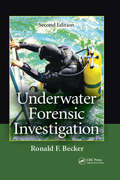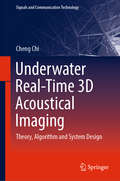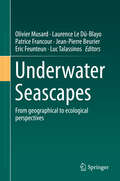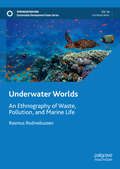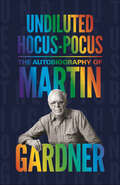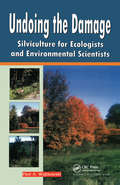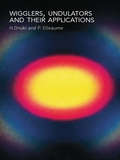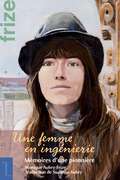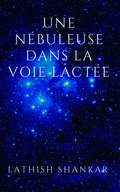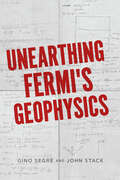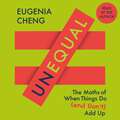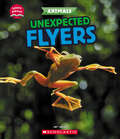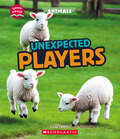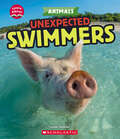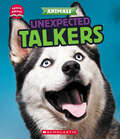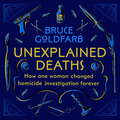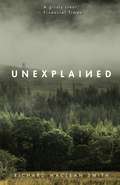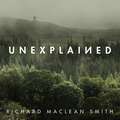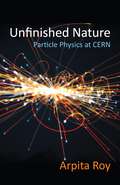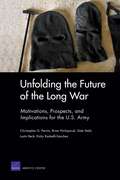- Table View
- List View
Underwater California
by Wheeler NorthThis guide describes the living creatures of underwater California.
Underwater Forensic Investigation
by Ronald F. Becker Stuart H. Nordby Jon J.The evidence discovered at underwater crime scenes must be handled with the same attention to proper chain of custody procedures as with any other type of investigation. Improper handling of these scenes can lead to evidence being lost, unrecognizable, destroyed, contaminated, or rendered inadmissible at the time of trial. Updated and expanded, Und
Underwater Real-Time 3D Acoustical Imaging: Theory, Algorithm and System Design (Signals and Communication Technology)
by Cheng ChiThis book presents the topic of underwater real-time 3-D acoustical imaging covering the theory, algorithms and system design. It summarizes recent advances in wideband and ultra-wideband underwater real-time 3-D acoustical imaging, which will be very useful for developing next-generation systems. Through simulation techniques, readers are able to quickly learn and develop practical underwater real-time 3-D acoustical imaging systems of their own.
Underwater Seascapes
by Olivier Musard Laurence Le Dû-Blayo Patrice Francour Jean-Pierre Beurier Eric Feunteun Luc TalassinosWhile the European Landscape Convention adopted in Florence in 2000 by the European Council offers a public-action framework through a normative definition, the marine and submarine dimensions of landscapes are attracting growing interest from researchers worldwide. At a time when marine-conservation objectives are strongly endorsed by the Convention on Biological Diversity, the French Marine Protected Areas Agency, a public institution under the governance of the French Ministry of the Environment, has gathered prominent experts to draft the very first interdisciplinary overview of underwater seascapes, so as to initiate and lend direction to a wider reflection on this emerging research topic.
Underwater Worlds: An Ethnography of Waste, Pollution, and Marine Life (Sustainable Development Goals Series)
by Rasmus RodineliussenThis book investigates relations between humans, waste, pollution, and marine life. It introduces the concept of Aquabiopolitics as a means to understand how humans govern life in water in order to enrich human life on land. The study focuses on the Baltic Sea and Lake Mälaren, using Stockholm, the capital of Sweden, as the connection point. Throughout the book, the author explores how human practices over time have had devastating effects on marine life and continue to have so today. The book engages with the marine world through underwater ethnography to provide a perspective on water from below the surface. In this endeavor, it tracks marine scientists and trash scuba divers who are jointly invested in tracking human maltreatment of water and finding solutions for treating water differently in the future. It follows the scientists on expeditions at sea and to their laboratories in order to learn about their methods and relations to underwater worlds. Together with the trash scuba divers, we will dive into the dark murky waters around Stockholm—experiencing what it is like to move below water, among sharp and toxic waste, without any visibility. The work of creating a knowing and caring relationship between humans and water is of key importance to both scientists and divers. Therefore, one of the main parts of this book is to analyze how, and if, this relationship can be created: via social media, images, installations, or other means.
Undiluted Hocus-Pocus: The Autobiography of Martin Gardner
by Martin GardnerThe autobiography of the beloved writer who inspired a generation to study math and scienceMartin Gardner wrote the Mathematical Games column for Scientific American for twenty-five years and published more than seventy books on topics as diverse as magic, religion, and Alice in Wonderland. Gardner's illuminating autobiography is a candid self-portrait by the man evolutionary theorist Stephen Jay Gould called our "single brightest beacon" for the defense of rationality and good science against mysticism and anti-intellectualism.Gardner takes readers from his childhood in Oklahoma to his varied and wide-ranging professional pursuits. He shares colorful anecdotes about the many fascinating people he met and mentored, and voices strong opinions on the subjects that matter to him most, from his love of mathematics to his uncompromising stance against pseudoscience. For Gardner, our mathematically structured universe is undiluted hocus-pocus—a marvelous enigma, in other words.Undiluted Hocus-Pocus offers a rare, intimate look at Gardner’s life and work, and the experiences that shaped both.
Undividing Digital Divide: Digital Literacy (SpringerBriefs in Education)
by Ömer Gökhan Ulum Dinçay Köksal Gülten GençThis book problematizes digital divide with critical lens by focusing on education in general and specifically second language education with an emphasis on the context of Turkey based on sound methodologies and robust theories of modernity, postmodernity, post-structuralism and post-method framework. In line with this conceptualization, critical thinking skills, social dialogue, collaboration, accessibility and digital literacy have been widely discussed empirically and prioritized in this book. In addition, social injustice, digital inequality, gender gap, economic disparity, demographic differences and knowledge divide have also been addressed. EFL teachers and pre-service teachers as cultural workers have been incorporated into the studies to critically reflect upon digital divide in Turkey. The views of teachers and learners at a socio-economic disadvantage emanating from socio-political issues have been addressed and foregrounded. The digital divide and inequalities that COVID-19 pandemic has produced have also been emphasized. The context of Turkey where digital divide has been prevalent during COVID-19 pandemic is believed to inspire researchers specializing in digitalization and digital education. The strategies, problems, effects and solutions have been presented. This book presents a reliable source to students, teachers and academics in education and second language education as well as social scientists and policy-makers across the globe.
Undoing the Damage: Silviculture for Ecologists and Environmental Scientists
by P A WojtkowskiAs a natural science, silviculture has a large say in how humans interact with the terrestrial world. Although the perspective taken here that the production of wood is narrow, the amount of land area consumed is extensive; the indirect consequences of wood production on natural processes are larger still. Through the amount of land engaged, the flora and fauna affected and the environmental consequences, good or bad; silviculture is a frequent constituent in applied ecology, environmental science, conservation ecology and other broad land-use disciplines. Silvicultural expertize is essential when trees and wood are an economic output; often best promoted when silviculture is allied with hydrology, ecology, soil science, wildlife management, etc. This book touches upon the following important areas of the subject in detail.
Undulators, Wigglers and Their Applications
by H. Onuki P. ElleaumeA "wiggler" is an insertion device used for spatially concentrating radiation for research purposes, and an "undulator" is a multi-period wiggler. Undulator and wiggler devices are inserted in a free straight section of the storage ring of the synchrotron. This book explores the radiation produced by these insertion devices, the engineering and ass
Une femme en ingénierie: Mémoires d'une pionnière (Biographies et mémoires #25)
by Monique FrizeDans ses mémoires à la fois inspirants et émouvants, l’ingénieure de renommée internationale, Monique Aubry-Frize, O.C., raconte son parcours exceptionnel dans un domaine résolument dominé par les hommes.Très tôt, son but était de devenir une ingénieure biomédicale reconnue afin d’améliorer le statut des femmes en sciences et en génie, ainsi que la manière dont les scientifiques et les ingénieurs intègrent les personnes et la société dans leurs travaux. Dès 1979, son rêve est devenu réalité.Monique Aubry-Frize relate avec lucidité et franchise les événements de sa vie qui lui ont permis de vaincre les nombreux obstacles qui se sont dressés sur sa route, de devenir plus résiliente, et de reconnaître l’importance des mentors et des modèles à suivre. Elle témoigne égalementdu rôle essentiel joué par sa famille et ses amis, qui l’ont soutenue et lui ont donné la force et la détermination nécessaires pour réussir dans un monde majoritairement masculin.L’autrice évoque avec tendresse son enfance à Ottawa et souligne son intérêt précoce pour les mathématiques et les sciences. Son entrée dans le monde de l’ingénierie a été romantique – c’est à la faculté de génie de l’Université d’Ottawa qu’elle a rencontré son premier mari –, mais également tragique. Elle a fait face à maints préjugés et stéréotypes qu’elle est finalement parvenue à surmonter. Elle a réussi à concilier travail et famille, poursuivant une carrière exigeante, mais gratifiante dans un domaine très spécialisé, à une époque où peu de femmes s’y risquaient.Ses mémoires Une femme en ingénierie seront sans aucun doute une source d’inspiration pour les nouvelles générations de femmes qui rêvent d’une carrière en sciences et en génie.
Une nébuleuse dans la Voie Lactée
by Lathish ShankarAmélia est une étudiante sensible aux événements paranormaux. Elle écrit un article pour le journal de l’université, sur lequel elle déclare qu'elle entend des voix venues du futur. Stephen, professeur de physique, lit l’article et en discute avec sa femme Isabella, docteur en psychiatrie. Un jour, Amélia s’évanouit dans la cafétéria pendant que ses amis parlaient des cours de dissections. Isabella, docteur d’Amélia, révèle qu’elle souffre d’une phobie de sang, causée par un évènement traumatisant. Stephen pense être à l’origine de sa peur. Se sentant responsable, il va demander de l’aide à son ami Zachariah John, l’inventeur de la machine à remonter le temps. Zachariah va-t-il aider son ami à remonter le temps ? Stephen va-t-il changer le cours du passé ? Va-t-il guérir Amélia de sa phobie ?
Unearthing Fermi's Geophysics
by Gino C. Segrè John D. StackFollow Nobel laureate and legendary teacher Enrico Fermi’s lost course on geophysics. Nobel Prize–winning physicist Enrico Fermi (1901–54) is known for his work on experimental particle and nuclear physics, quantum theory, and statistical mechanics, and for his particular ability to condense complicated problems into approximations for understanding and testing theory in a variety of scientific disciplines. Six of his graduate students went on to win their own Nobel Prizes. Unearthing Fermi’s Geophysics opens a window onto two underrepresented facets of this extraordinary thinker: Fermi’s teaching and his contribution to the field of geophysics. Drawing on Fermi’s handwritten calculations and notes, many of which are reproduced here in photographic facsimile, physicists Gino Segrè and John Stack have reconstructed a coursebook of Fermi’s insights into the physics of a range of geological and atmospheric phenomena. From gravity on Earth to thermodynamics in the atmosphere, the physics of raindrops, the Coriolis effect in hurricanes, tidal physics, earthquakes and seismic waves, Earth’s magnetism, atmospheric electricity, and much more, Unearthing Fermi’s Geophysics reveals the hidden workings of the world above, around, and below us—and of the mind of a great scientist who was able to bring those physical workings to light.
Unearthing Fermi's Geophysics
by Gino C. Segrè John D. StackFollow Nobel laureate and legendary teacher Enrico Fermi’s lost course on geophysics. Nobel Prize–winning physicist Enrico Fermi (1901–54) is known for his work on experimental particle and nuclear physics, quantum theory, and statistical mechanics, and for his particular ability to condense complicated problems into approximations for understanding and testing theory in a variety of scientific disciplines. Six of his graduate students went on to win their own Nobel Prizes. Unearthing Fermi’s Geophysics opens a window onto two underrepresented facets of this extraordinary thinker: Fermi’s teaching and his contribution to the field of geophysics. Drawing on Fermi’s handwritten calculations and notes, many of which are reproduced here in photographic facsimile, physicists Gino Segrè and John Stack have reconstructed a coursebook of Fermi’s insights into the physics of a range of geological and atmospheric phenomena. From gravity on Earth to thermodynamics in the atmosphere, the physics of raindrops, the Coriolis effect in hurricanes, tidal physics, earthquakes and seismic waves, Earth’s magnetism, atmospheric electricity, and much more, Unearthing Fermi’s Geophysics reveals the hidden workings of the world above, around, and below us—and of the mind of a great scientist who was able to bring those physical workings to light.
Unearthing the Nation: Modern Geology and Nationalism in Republican China
by Grace Yen ShenQuestions of national identity have long dominated ChinaOCOs political, social, and cultural horizons. So in the early 1900s, when diverse groups in China began to covet foreign science in the name of new technology and modernization, questions of nationhood came to the fore. In "Unearthing the Nation," Grace Yen Shen uses the development of modern geology to explore this complex relationship between science and nationalism in Republican China. aaaaaaaaaaaShen shows that Chinese geologistsOCoin battling growing Western and Japanese encroachment of Chinese sovereigntyOCofaced two ongoing challenges: how to develop objective, internationally recognized scientific authority without effacing native identity, and how to serve China when China was still searching for a stable national form. Shen argues that Chinese geologists overcame these obstacles by experimenting with different ways to associate the subjects of their scientific study, the land and its features, with the object of their political and cultural loyalties. This, in turn, led them to link national survival with the establishment of scientific authority in Chinese society. The first major history of modern Chinese geology, "Unearthing the Nation "introduces the key figures in the rise of the field, as well as several key organizations, such as the Geological Society of China, and explains how they helped bring Chinese geology onto the world stage. "
Unequal: The Maths of When Things Do and Don’t Add Up
by Eugenia ChengRead by the author.At first glance, the concept of equality in maths seems unambiguous. When we see the equality sign, we think of 'solving for x' or balancing two sides of an equation or maybe even the many famous equations that make use of this elegant, innocuous symbol.=But between those parallel lines lies a mathematical playground of choice and abstraction, leading to far greater insight than you could have dreamed. As it turns out, sameness and difference, equality and inequality, are not nearly as straightforward as they seem.=/=Unequal explores the rich and rewarding interplay between sameness and difference, from numbers to manifolds to category theory and beyond in a glorious celebration of mathematics that will change the way you look at maths - and the world around you - forever.This audiobook has been adapted for audio format. While all essential content is included and fully accessible through listening, a supplemental PDF is provided for additional reference. This material is not required to enjoy or understand the audiobook, but may offer helpful context or be of interest to listeners.
Uneven Economic Resilience of Old Industrial Cities in China: A Multiple-Perspective Analysis (Urban Sustainability)
by Xiaohui HuTaking the Chinese context seriously, this book provides critical reflections and policy-informed accounts of how and why old industrial cities generate uneven resilience in the face of crisis. It offers unconventional conceptualizations and on-the-ground empirical studies in the Chinese context when it comes to the literature on regional economic resilience. Theoretically, this book adopts multiple perspectives, including evolutionary, complex adaptive systems, and institutional and geographical political economy, to provide a more systematic understanding of regional economic resilience in Chinese old industrial cities. Empirically, this book adopts a comparative analysis approach to explore the in-depth nature of uneven regional economic resilience by focusing on two coal mining regions in China. The book also makes an additional and timely academic contribution to the literature on the conceptualization and empirics of regional economic resilience under the COVID-19 pandemic crisis. This book is suitable for undergraduate and graduate students and scholars interested in economic geography in general and regional economic resilience, regional industrial dynamics and old industrial cities in China in particular. It is also a useful reference for local and regional governments, as well as businesses, for policy-making and action in the face of crisis.
Unexpected Flyers (Learn About)
by Jay LeslieLet's learn all about animals that can do some unexpected things!Can you believe there are snakes that can fly? What about lizards? With amazing photos and lively text, this book explores five different creatures that, unexpectedly, can fly! Get ready to learn why and how these surprising animals can take to the skies!ABOUT THE SERIES: The natural world is filled with animals doing unexpected things! It is hard to believe, but orcas can talk, sloths can swim, some snakes can fly, and octopuses love to play. Each book in this vibrant new nonfiction series explores the unusual abilities of five different animals, along with their habitat, diet, and behavior. Packed with photographs and fun facts, readers will learn all about these talented creatures that can fly, play, swim, and talk!
Unexpected Players (Learn About)
by Claire CaprioliLet's learn all about animals that can do some unexpected things!Can you believe that some octopuses like to play? What about sheep? With amazing photos and lively text, this book explores five different creatures that, unexpectedly, love to play! Get ready to learn how these surprising animals have tons of fun!ABOUT THE SERIES: The natural world is filled with animals doing unexpected things! It is hard to believe, but orcas can talk, sloths can swim, some snakes can fly, and octopuses love to play. Each book in this vibrant new nonfiction series explores the unusual abilities of five different animals, along with their habitat, diet, and behavior. Packed with photographs and fun facts, readers will learn all about these talented creatures that can fly, play, swim, and talk!
Unexpected Swimmers (Learn About)
by Claire CaprioliLet's learn all about animals that can do some unexpected things!Can you believe that sloths can swim? What about elephants? With amazing photos and lively text, this book explores five different creatures that, unexpectedly, can swim! Get ready to learn why and how these surprising animals splash around!ABOUT THE SERIES:The natural world is filled with animals doing unexpected things! It is hard to believe, but orcas can talk, sloths can swim, some snakes can fly, and octopuses love to play. Each book in this vibrant new nonfiction series explores the unusual abilities of five different animals, along with their habitat, diet, and behavior. Packed with photographs and fun facts, readers will learn all about these talented creatures that can fly, play, swim, and talk!
Unexpected Talkers (Learn About)
by Jay LeslieLet's learn all about animals that can do some unexpected things!Can you believe some cats can talk? What about dogs? With amazing photos and lively text, this book explores five different creatures that, unexpectedly, can talk! Get ready to learn why and how these surprising animals chat away!ABOUT THE SERIES: The natural world is filled with animals doing unexpected things! It is hard to believe, but orcas can talk, sloths can swim, some snakes can fly, and octopuses love to play. Each book in this vibrant new nonfiction series explores the unusual abilities of five different animals, along with their habitat, diet, and behavior. Packed with photographs and fun facts, readers will learn all about these talented creatures that can fly, play, swim, and talk!
Unexplained Deaths: How one woman changed homicide investigation forever
by Bruce GoldfarbFor most of human history, sudden and unexpected deaths of a suspicious nature, when they were investigated at all, were examined by lay persons without any formal training. People often got away with murder. Modern forensic investigation originates with Frances Glessner Lee - a pivotal figure in police science.'Disturbing dioramas created by an American millionairess revolutionised the art of modern forensics.' DAILY TELEGRAPH Frances Glessner Lee (1878-1962), born a socialite to a wealthy and influential Chicago family, was never meant to have a career, let alone one steeped in death and depravity. Yet she became the mother of modern forensics and was instrumental in elevating homicide investigation to a scientific discipline.Frances Glessner Lee learned forensic science under the tutelage of pioneering medical examiner Magrath - he told her about his cases, gave her access to the autopsy room to observe post-mortems and taught her about poisons and patterns of injury. A voracious reader too, Lee acquired and read books on criminology and forensic science - eventually establishing the largest library of legal medicine. Lee went on to create The Nutshell Studies of Unexplained Death - a series of dollhouse-sized crime scene dioramas depicting the facts of actual cases in exquisitely detailed miniature - and perhaps the thing she is most famous for. Celebrated by artists, miniaturists and scientists, the Nutshell Studies are a singularly unusual collection. They were first used as a teaching tool in homicide seminars at Harvard Medical School in the 1930s, and then in 1945 the homicide seminar for police detectives that is the longest-running and still the highest-regarded training of its kind in America. Both of which were established by the pioneering Lee.In Unexplained Deaths, Bruce Goldfarb weaves Lee's remarkable story with the advances in forensics made in her lifetime to tell the tale of the birth of modern forensics.This audiobook was originally published in 2020 under the title 18 Tiny Deaths. (p) 2020 Octopus Publishing Group
Unexplained: Based on the 'world's spookiest podcast'
by Richard MacLean Smith'A grisly treat' Financial Times on the podcast Based on the 'world's spookiest podcast' of the same name comes Unexplained: a book of ten real-life mysteries which might be best left unexplained. . . ******************************* What can a case of demonic possession in 1970's Germany teach us about free will?What might we learn about how we construct reality from the case of a poltergeist in the Fens?And what can a supposed instance of reincarnation in Middlesbrough tell us about how we develop a concept of the self? Taking incidents once thought of as supernatural or paranormal and questioning whether radical ideas in science might provide a new but equally extraordinary explanation, Unexplained asks what real-life unexplained events can reveal of our unique human experience. 'These mysteries are all the creepier for being true' Tatler
Unexplained: Based on the 'world's spookiest podcast'
by Richard MacLean SmithEditor's Choice in The BooksellerBased on the 'world's spookiest podcast' of the same name comes Unexplained: a book of ten real-life mysteries which might be best left unexplained. . . Demonic possession in 1970's Germany.UFOs in Rendlesham forest.Reincarnation in Middlesbrough.Richard Maclean Smith delves into these mysteries and many more, with a supporting cast bringing to life the unexplained occurrences in this special immersive audio edition. Based on one of the most successful paranormal podcasts ever, with over 10 million streams and downloads to date, Unexplained consists of ten chapters focussing on a different paranormal event, from Australia to Germany, the UK to Zimbabwe, using the stories as gateways to a journey beyond the veil of the uncanny, exploring what they reveal of the human experience.This special immersive audio edition is narrated by Richard MacLean Smith and features full cast recreations of the unexplained events. Taking ideas once thought of as supernatural or paranormal and questioning whether radical ideas in science might provide a new but equally extraordinary explanation, Unexplained is The Examined Life meets The X Files.'A grisly treat' Financial Times on the podcast(P)2018 Hodder & Stoughton Limited
Unfinished Nature: Particle Physics at CERN
by Arpita RoyThe discovery of the Higgs boson in 2012, the culmination of a decades-long search, is one of the singular triumphs of particle physics. Advanced experiments at the Large Hadron Collider at CERN (the Conseil Européen pour la Recherche Nucléaire) near Geneva detected the long-hypothesized particle, resulting in the 2013 Nobel Prize in Physics. Drawing on two and a half years of in-depth fieldwork spent among CERN’s research community during this critical period, Arpita Roy offers a rich analysis of science in the making.To what extent are scientific discoveries a matter of empirical findings? How do scientists at the farthest reach of abstraction understand their work? Unfinished Nature delves deep into this particle physics laboratory to distinguish the modes of reasoning that animate scientific discoveries and innovations. Demonstrating a deep knowledge of both contemporary physics and the methods of qualitative social science, Roy considers what scientists have to say about their commitments and concerns, the sources and vision guiding their experiments, and the questions they ask of themselves and others. In so doing, she argues that finding new facts in experimental physics turns on conceptual leaps, not necessarily empirical results. A sophisticated interdisciplinary ethnography of a scientific community, Unfinished Nature offers provocative insights into the nature and production of scientific knowledge.
Unfolding the Future of the Long War: Motivations, Prospects, and Implications for the U. S. Army
by Brian Nichiporuk Christopher G. Pernin Justin Beck Dale Stahl Ricky Radaelli-SanchezThe United States is currently engaged in a military effort that has been characterized as the "long war." This study explores the concept of long war and identifies ways in which it might unfold as well as the implications for the Army and the U.S. military more generally. This report uses the generation of either "trajectories" or alternative paths in which the long war might unfold to explore the implications for the U.S. military.

